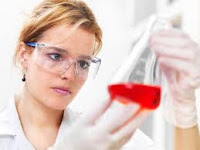Research Technician Job Description
Clinical research technicianContext
In the race for drug companies that are engaged in pharmaceutical research, clinical trials represent a key phase of drug development and other health products. Technicians in clinical research have an important role to play to the investigator that manages and controls the conduct of research.
Clinical Research Technician Description
The technician's role in clinical research is to assist the investigator throughout the process of setting up at the end of the trial. He therefore apply the research techniques of the living. For this, he participated in patient recruitment and coordination between them and the various clinical services. He works for a university hospital or a private company, technician clinical research still assumes responsibility for the quality, reliability and authenticity of data collected.
Clinical Research Technician Main tasks
∙ Participate in meetings to set up protocols
∙ Identify and select patients in clinical studies incluables
∙ Organize their visits on time under the Protocol
∙ Take measurements on living
∙ Prepare biological samples for analysis
∙ Ensure storage (labeling, storage) in accordance with "good clinical practice"
∙ Send, if necessary, the samples to laboratories for analysis
∙ Complete the specification of investigation with patient data and format the results
∙ Follow up with the patient (adverse effects, organization of subsequent visits)
∙ Liaise with all stakeholders in research (clinicians, pharmacy, biologists, laboratories ...)
∙ Support aircraft maintenance and update their calendar of Use
cForm continuously to new techniques
Clinical Research Technician Degree
To work as a technician in clinical research, it is necessary to obtain a college diploma (DEC) in medical technology, biology ... Bachelor'sDegree in science is an advantage.
Clinical Research Technician Skills
∙ Possess a good grounding in biology
∙ Have control of research techniques in living
∙ Know the technical software and those related to the presentation of results
∙ Control office software: Word, Excel, Powerpoint, Access, Outlook
∙ Have some legal concepts about the clinical research
∙ Know business terminology in English
Clinical Research Technician Skills
∙ Practical and synthetic
∙ Sense of responsibility
∙ Rigorous, organized, self
∙ Able to work as a team
∙ Sense of dialogue and diplomacy
Clinical Research Technician Salary
The salary of the technician in clinical research will depend on the level of education, experience, the province in which they work and finally the characteristics of his employer (private or public). Overall, we can say that the technician in clinical research will receive remuneration ranging from 30 000 to 50 000 per year.
Clinical Research Technician Professional development
The medical research technician, after several years of experience, may wish to move to another discipline such as quality, economic studies or choose a different path such as management or training.






















